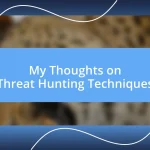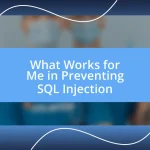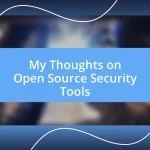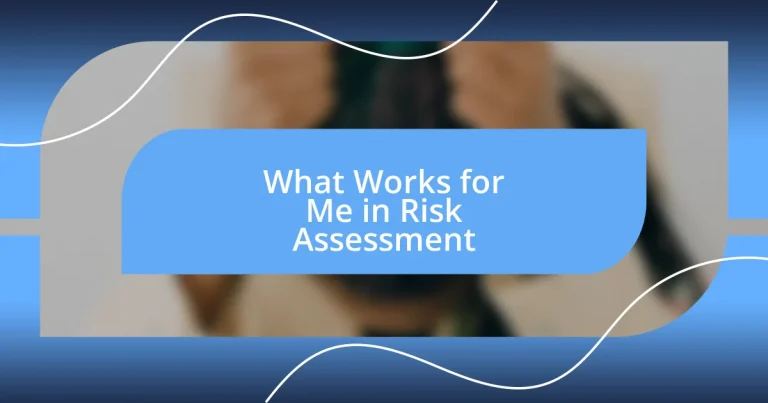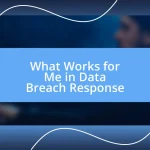Key takeaways:
- Risk assessment is a systematic process that involves identifying, evaluating, and prioritizing risks, with context and collaboration being crucial for effective outcomes.
- Key techniques for analyzing risks include SWOT analysis, risk matrices, and scenario analysis, which enhance understanding and foster proactive decision-making.
- Regular review, clear communication, and the use of tools like risk assessment software and checklists are essential for successful risk mitigation and continuous improvement.
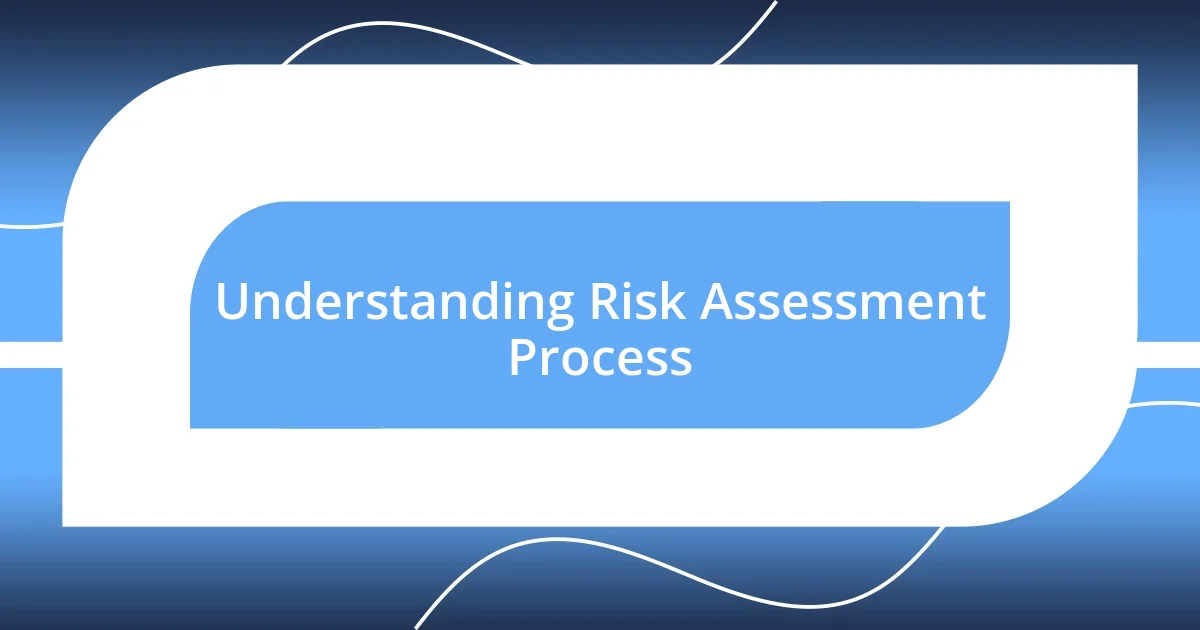
Understanding Risk Assessment Process
Risk assessment is essentially a systematic process that helps identify, evaluate, and prioritize risks. I remember the first time I encountered this process during a project. I thought, “How do you even begin?”, but as I delved deeper, I learned that breaking it down into distinct stages made it manageable. Each step—from identifying hazards to analyzing potential impacts—offered a unique insight into what could go wrong and how to prepare for it.
One aspect that often strikes me is the importance of context in risk assessment. Have you ever considered how the same risk can manifest differently depending on the environment? For example, a simple power outage may not be a significant issue in a residential setup, but it could halt operations in a busy hospital. Addressing these nuances in your assessments can make all the difference in effective planning.
Moreover, involving team members from different departments brings diverse perspectives that enrich the assessment process. When I facilitated a risk assessment workshop once, we had each person share their experiences with potential risks. The room buzzed with ideas and realizations, and I could see the team growing more engaged and committed. It became clear that risk assessment is not only about danger mitigation but also a way to foster collaboration and understanding among colleagues.
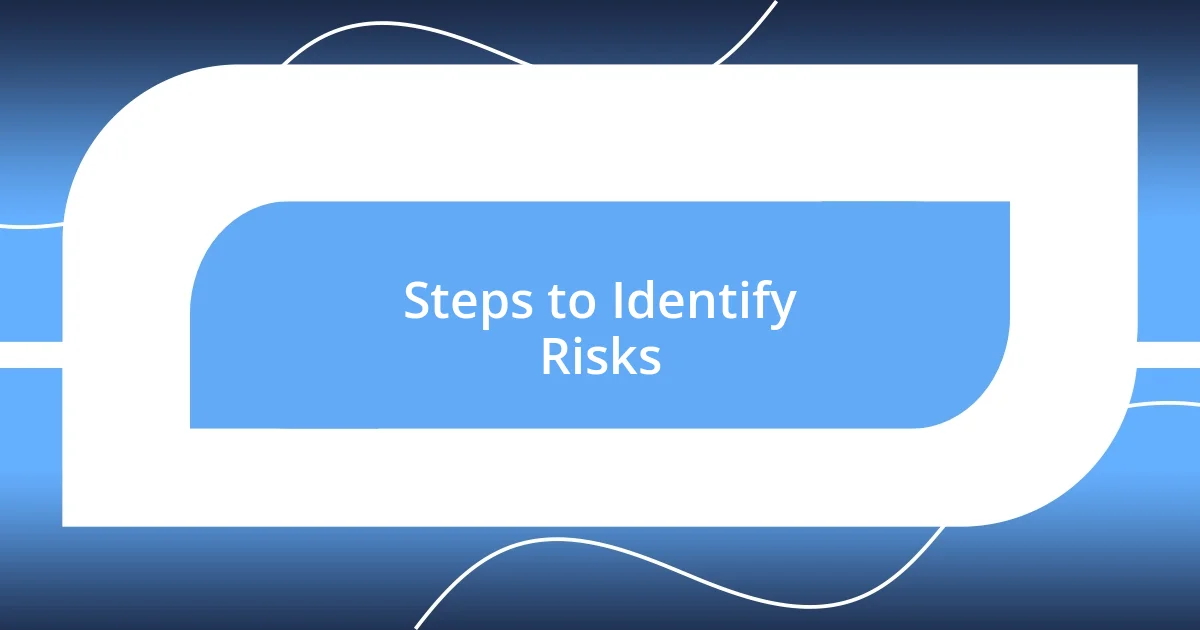
Steps to Identify Risks
Identifying risks can feel overwhelming, but I find that breaking it down into manageable steps is key. One effective way I’ve approached this process is by brainstorming potential hazards with my team. We used sticky notes to jot down anything that popped into our minds—some were obvious, while others were surprising. This brainstorming session not only sparked creativity but also made everyone feel valued in the process.
Here are the essential steps I recommend for identifying risks:
- Gather Information: Collect background data, such as project specifics and historical data, to understand the context better.
- Brainstorm Risks: Encourage team members from various departments to share their insights and concerns about potential risks.
- Categorize: Organize identified risks into categories (for instance, operational, financial, or environmental) to streamline analysis later.
- Prioritize: Assess which risks are most significant based on their potential impact and likelihood of occurrence.
By tackling the identification process systematically, I believe you’ll uncover nuances that might otherwise remain hidden. It’s fascinating to see how these steps evolve with a team’s unique dynamics, fostering both discovery and a sense of unity.
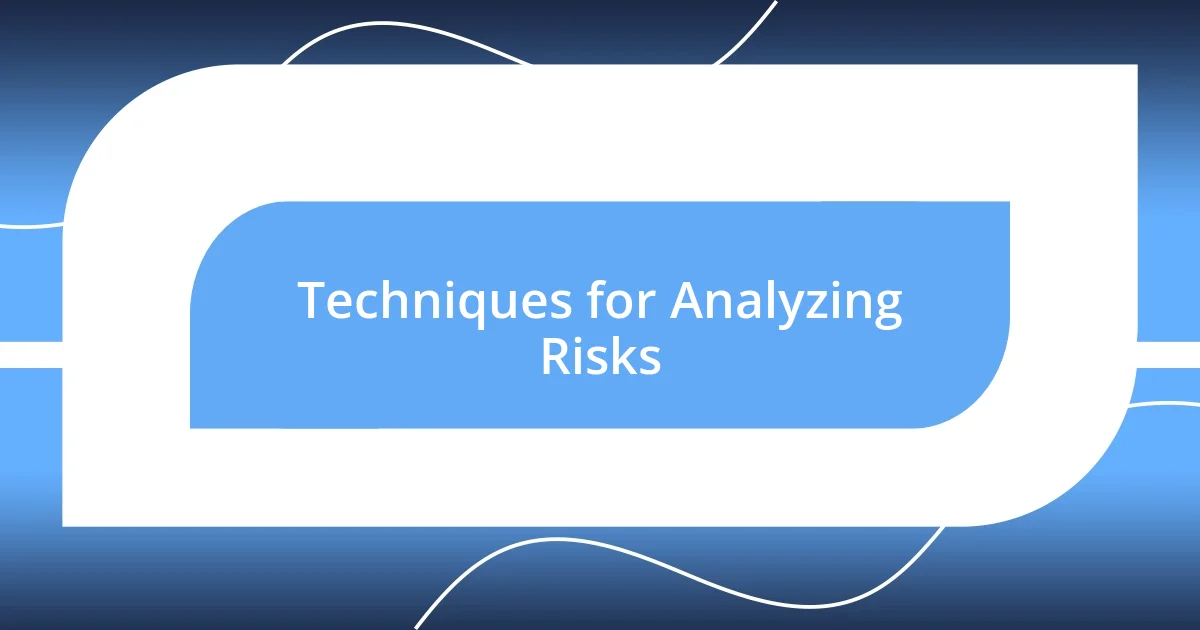
Techniques for Analyzing Risks
The techniques for analyzing risks are crucial in ensuring that we not only identify potential dangers but also understand their implications. One effective method I’ve utilized is the SWOT analysis, which examines strengths, weaknesses, opportunities, and threats. It’s a straightforward yet powerful approach; I remember a time when we assessed a new project, and the insight we gained from discussing threats allowed us to pivot our strategy effectively. Identifying those threats early on was eye-opening, and I can honestly say that the project’s success hinged on that clarity.
Another technique that stands out to me is the use of risk matrices. These matrices help visualize and prioritize risks based on their likelihood and impact. In one particular situation, I mapped out risks on a matrix during a strategy meeting, and it transformed our conversation. We could see at a glance which risks needed immediate attention. It was almost like lifting the fog away from our decision-making process. This visual representation sparked deeper discussions, and I genuinely felt that everyone was more aligned at the end.
Finally, I often rely on scenario analysis, which allows me to simulate potential events and their impacts. I recall a workshop where we imagined various risk scenarios—like cybersecurity breaches or natural disasters—and assessed how our responses would play out. The energy in the room was palpable as we brainstormed solutions. This technique really helps me think outside the box and prepares our team for unexpected situations. It’s not just about the theoretical risks; it’s about fostering a mindset that is proactive and resilient.
| Technique | Description |
|---|---|
| SWOT Analysis | A strategic tool that evaluates strengths, weaknesses, opportunities, and threats to gain insights into risks. |
| Risk Matrix | A visual representation that categorizes risks based on their likelihood of occurrence and potential impact. |
| Scenario Analysis | A method to simulate potential risk events and assess their impacts on projects or operations. |
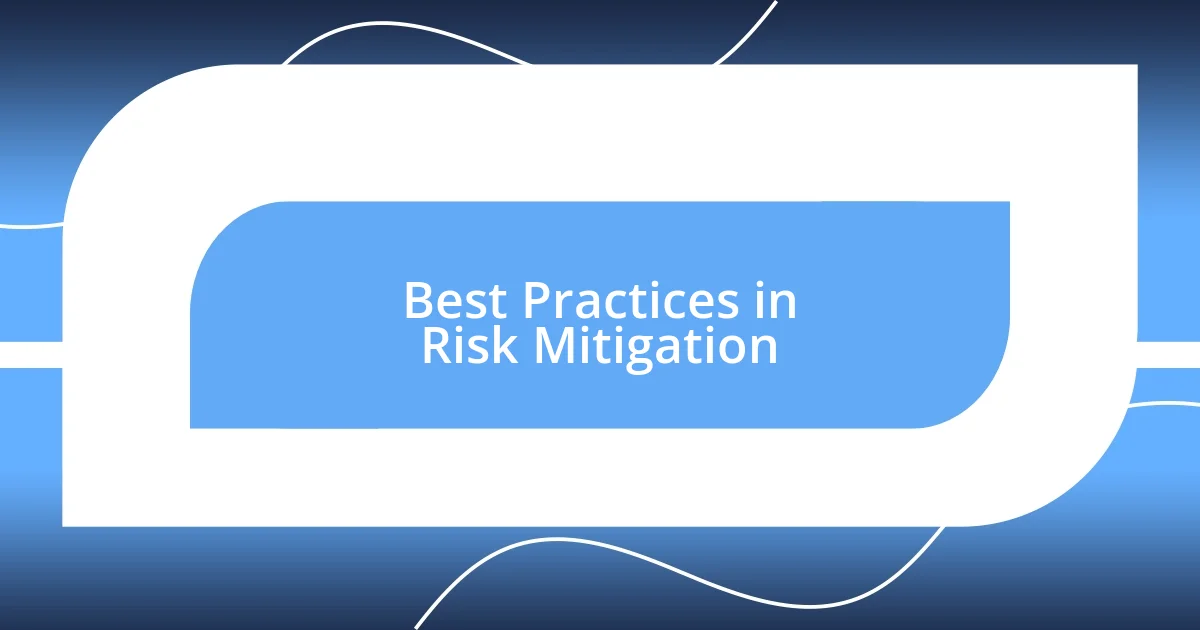
Best Practices in Risk Mitigation
Mitigating risks effectively often boils down to developing robust contingency plans. I recall a past project where we faced a major setback due to unexpected regulatory changes. Instead of panicking, we quickly convened to discuss fallback options. This experience reinforced my belief that having pre-emptive plans in place not only alleviates stress but also empowers teams to navigate uncertainty with confidence. Doesn’t it feel good to have a safety net when things get shaky?
Communication is another cornerstone of successful risk mitigation. I’ve found that keeping stakeholders informed about current risks and mitigation strategies can drastically improve buy-in and collaboration. During one project, we held weekly check-ins that focused explicitly on updates to our risk management plans. This transparency fostered trust within the team and helped preemptively address concerns, ultimately making everyone feel more involved and invested. How often do we consider that sharing our challenges can unify our efforts?
Finally, I can’t stress enough the importance of regular reviews and updates to your risk mitigation strategies. Risks evolve, and so should our responses. Early in my career, I overlooked this step and faced the consequences when an old risk resurfaced unexpectedly, catching us off guard. Since then, I’ve made it a ritual to review our risk management plans quarterly and have seen how this practice not only keeps the team aligned but also signals the importance of adaptability. Isn’t it fascinating how a small routine can lead to significant improvements?
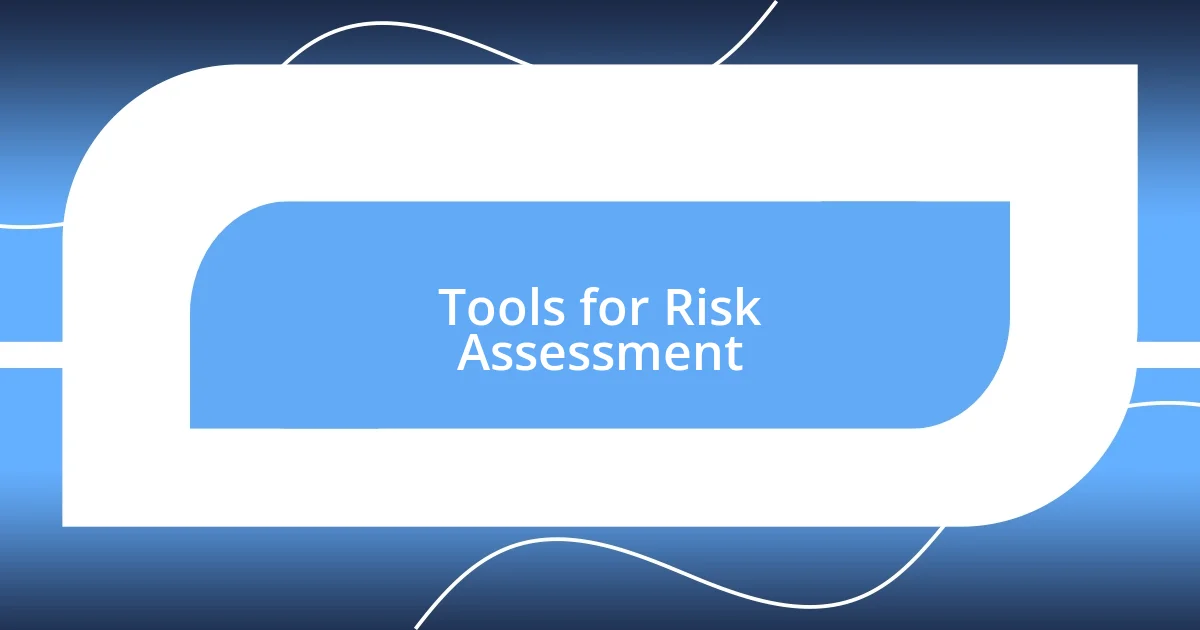
Tools for Risk Assessment
When selecting tools for risk assessment, I’ve found that using software platforms such as RiskWatch and LogicManager can streamline the entire process. These tools not only offer comprehensive dashboards but also integrate data from various sources, making it easier to see the big picture. I vividly remember the relief I felt when we adopted a risk management tool that automated many of our processes. Suddenly, the hours spent on manual tracking transformed into time we could spend analyzing outcomes and building strategies.
Another essential tool I frequently turn to is checklists. While they may appear simplistic, I’ve experienced firsthand how effective checklists can be in ensuring no potential risk falls through the cracks. For instance, in a project deadline crunch, I pulled out a risk checklist that we had created during the planning phase. It helped us identify overlooked risks related to vendor dependencies that could have derailed our timely delivery. It struck me just how a little diligence in documentation could have such a profound impact on our results.
I’ve also dabbled in simulation tools, such as Monte Carlo simulations, to analyze risks quantitatively. Engaging in these simulations can be enlightening, particularly when expectations around project timelines are at odds with reality. I recall one specific instance where we projected potential delays based on various risk factors, and the outcomes were eye-opening. The conversations that followed allowed our team to grasp not only the severity of possible setbacks but also creative solutions we hadn’t considered. It reinforced my belief that quantifying risks can lead to more informed and impactful decision-making—don’t you think clarity in numbers often breeds confidence?
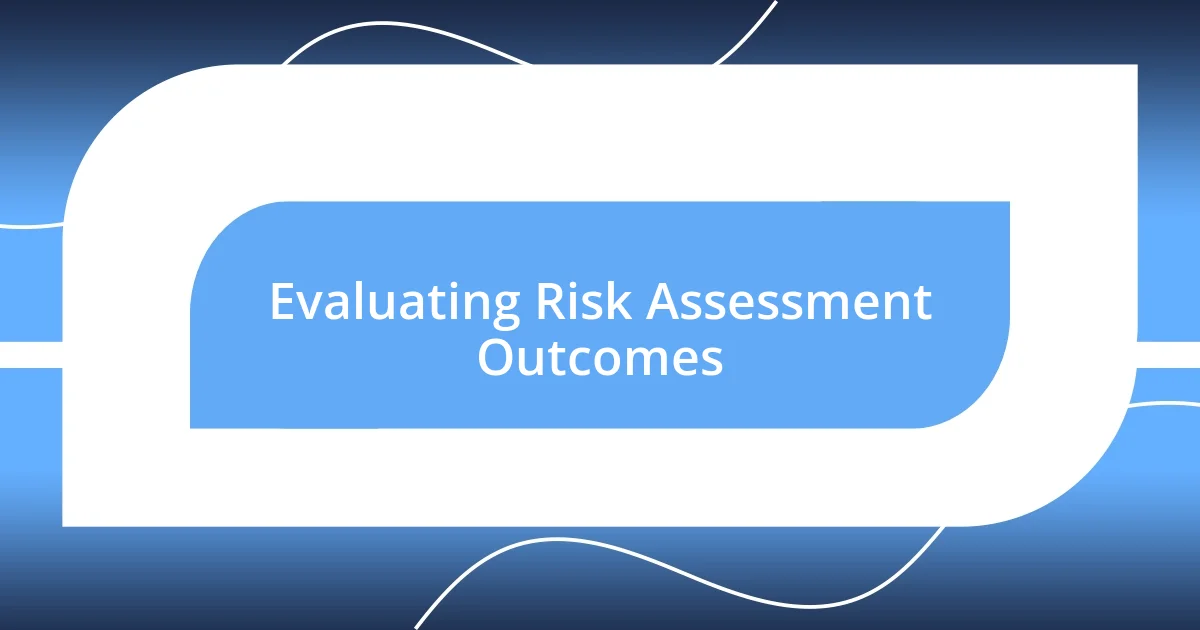
Evaluating Risk Assessment Outcomes
Evaluating the outcomes of risk assessments is a critical step that offers valuable insights into our decision-making processes. I remember wrapping up a significant project and reflecting on its risks. We gathered as a team to dissect what worked and what didn’t. The discussions were intense but illuminating. Analyzing our decisions helped me understand how our initial risk evaluations shaped many aspects of the project’s success. Have you ever had a moment where a past misstep opened your eyes to new possibilities?
In my experience, clearly defined metrics for success can aid greatly in evaluation. Once, I implemented a set of KPIs—Key Performance Indicators—focused on both qualitative and quantitative outcomes after a major assessment. By tracking these metrics consistently, I was able to identify trends that illustrated the strengths and weaknesses of our risk approaches. It was fascinating to see how adjusting just a few elements led to a significant improvement. Have you ever noticed how small tweaks can yield big results?
Reviewing risk assessment outcomes is more than just a checklist; it’s about fostering an environment of continuous improvement. After one particular project, I initiated a “lessons learned” session that encouraged candid conversations about our risk assessment process. The open dialogue not only highlighted gaps but also sparked innovative strategies that we could apply to future projects. Doesn’t it empower you to think that every experience, whether successful or challenging, can be transformed into a stepping stone for better results?

